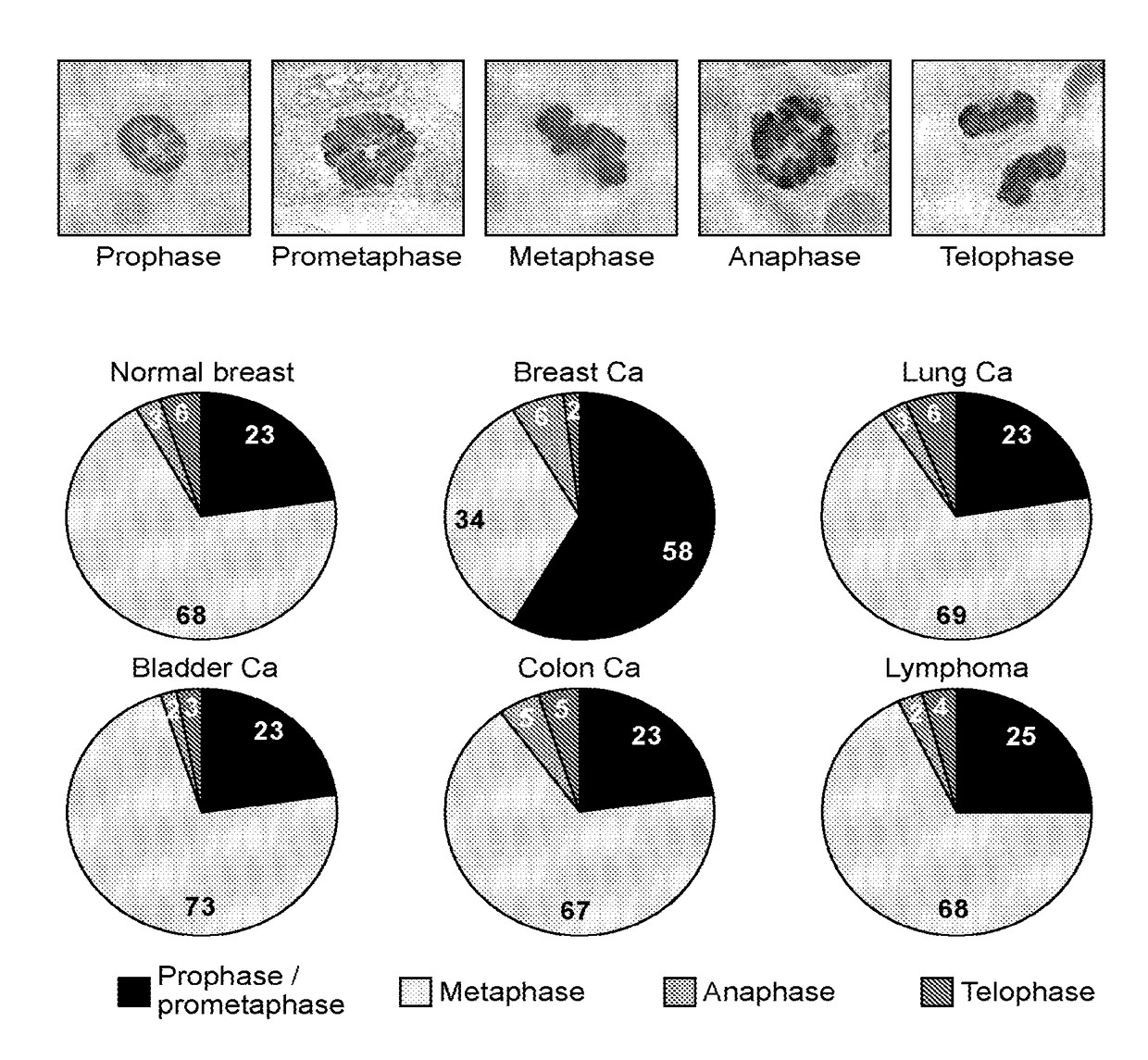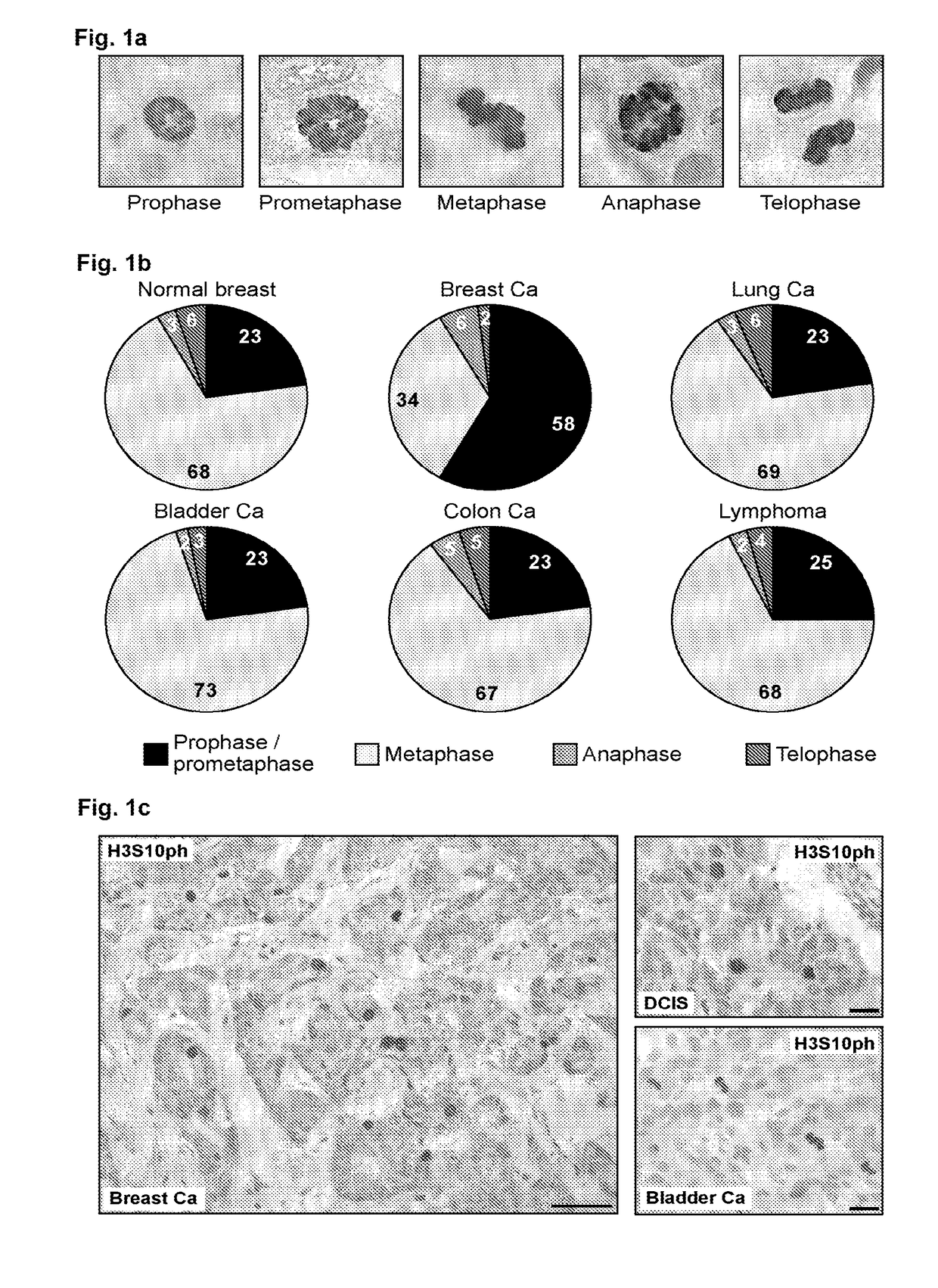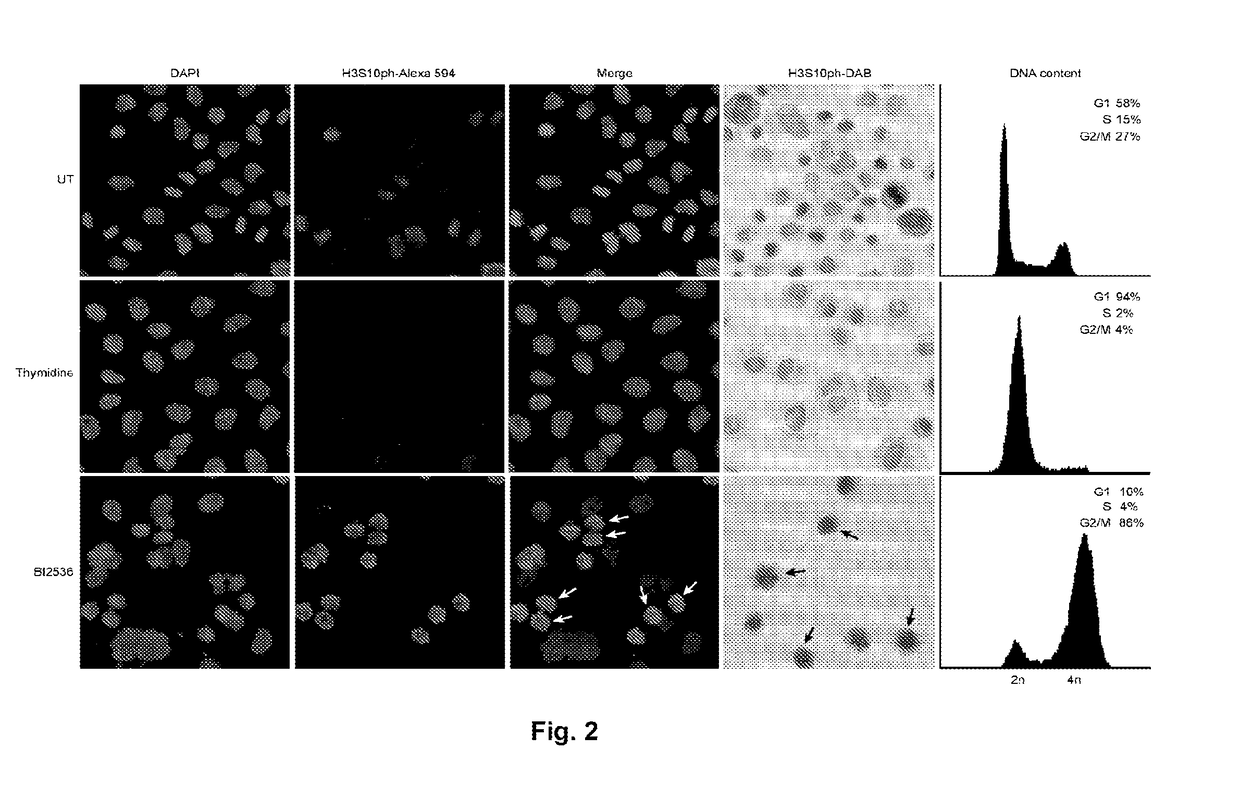Detection and treatment of breast cancer
a breast cancer and breast cancer technology, applied in the field of breast cancer detection and treatment, can solve the problems of limited prognostic markers, insufficient function, and often different shapes of cancer cells, and achieve the effect of increasing endogenous pappa levels and being focused and effectiv
- Summary
- Abstract
- Description
- Claims
- Application Information
AI Technical Summary
Benefits of technology
Problems solved by technology
Method used
Image
Examples
example 1
Methods
Tissue Specimens
[0136]Formalin-fixed, paraffin-embedded tissue was retrieved from the archives of the Department of Pathology at UCL (UCL Hospitals, London, UK) and included: invasive breast cancer (n=182, 156 of which were included for analysis of mitotic phase distribution); ductal carcinoma in situ (DCIS; n=81, 69 evaluable); normal breast tissue from reduction mammoplasty specimens (n=33, evaluability not relevant); normal breast tissue from pregnant patients (n=5, all evaluable); colon adenocarcinoma (n=41, all evaluable); transitional cell carcinoma of the bladder (n=27, all evaluable); penile squamous cell carcinoma (n=33, all evaluable); gastric adenocarcinoma (n=21, all evaluable); malignant melanoma (n=21, all evaluable); small cell lung cancer (n=30, all evaluable); and non-Hodgkin lymphoma (n=29, all evaluable). Cases were selected on the basis of available histological material and clinico-pathological information. Histological specimens had been reviewed by a qu...
example 2
[0162]Exogenously added IGF-1 restores normal progression through mitosis in breast cancer cells displaying prophase / prometaphase delay phenotype.
[0163]A known function of PAPPA is to release the hormone IGF-1 from its sequestering inhibitory binding protein IGFBP-4. By increasing the local bioavailability of IGF-1 at the cell surface, PAPPA activity increases IGF-dependent signalling and promotes cell growth and proliferation. Thus it can be postulated that PAPPA is likely to affect mitotic progression in breast cancer cells by modulating signalling through the IGF pathway. It follows from this that treatment of T47D breast cancer cells, which closely resemble tumour cells in vivo (i.e. display PAPPA promoter methylation and the mitotic delay phenotype; FIG. 14), with recombinant IGF-1 should restore normal progression through mitosis in this cell line. For these experiments, T47D cells were serum starved for 48 hours. The viability of the cells was established using Trypan Blue vi...
PUM
| Property | Measurement | Unit |
|---|---|---|
| population doubling time | aaaaa | aaaaa |
| pH | aaaaa | aaaaa |
| concentration | aaaaa | aaaaa |
Abstract
Description
Claims
Application Information
 Login to View More
Login to View More - R&D
- Intellectual Property
- Life Sciences
- Materials
- Tech Scout
- Unparalleled Data Quality
- Higher Quality Content
- 60% Fewer Hallucinations
Browse by: Latest US Patents, China's latest patents, Technical Efficacy Thesaurus, Application Domain, Technology Topic, Popular Technical Reports.
© 2025 PatSnap. All rights reserved.Legal|Privacy policy|Modern Slavery Act Transparency Statement|Sitemap|About US| Contact US: help@patsnap.com



